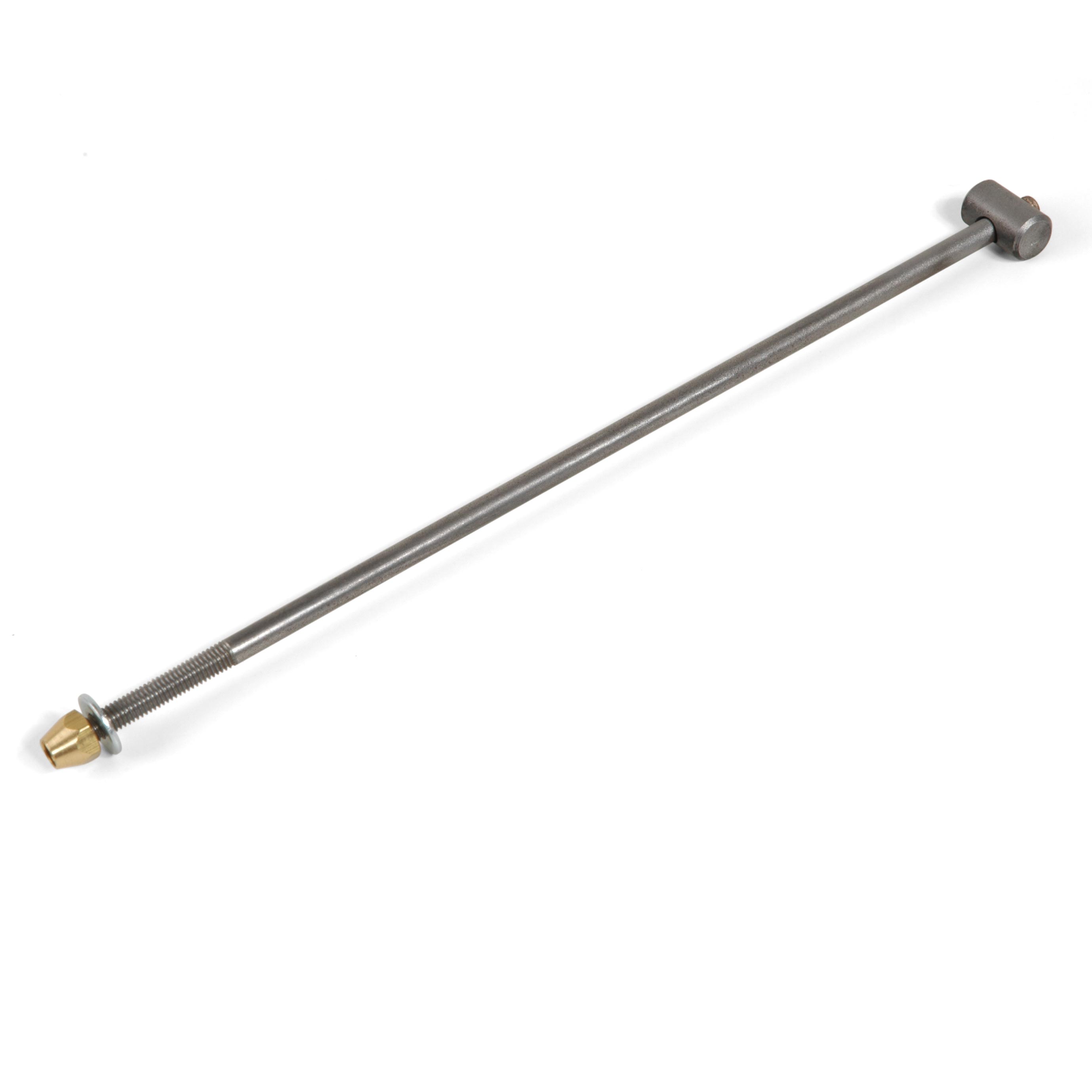Mandolin Truss Rod Instructions
Instructions for the installation and adjustment of mandolin truss rods.
1. The truss rod should be installed before the fingerboard is glued onto the neck. Sand the top of the neck flat and cut a slot 3/16" wide and 7/16" deep, down the middle of the full length of the top of the neck. Use a table saw or a router. 2. Locate the truss rod so that the adjusting nut and washer, and the fixed "barrel" anchor nut, are at the locations shown in the diagram. Some mandolin necks may require the adjusting nut closer to the string nut, for proper placement of the plastic truss rod cover. Mark the positions of these locations on the top of the neck. 3. Drill a 3/8"-diameter hole, 5/8" deep for the barrel anchor nut. 4. Widen the slot cylindrically at the peghead, to form a 1/2"-diameter channel. This will allow access to the adjusting nut and will let the truss rod fit freely into its slot along its entire length. Wrap a bit of masking tape around the center of the rod to prevent rattling. 5. Prepare filler sticks of matching wood to cover the truss rod and the slot beyond the anchor nut. The filler sticks should fit snugly but should not be forced in too tightly. Glue them in place and clamp while drying. Don't get glue on the rod or the threads. When dry, sand the top of the neck flush again, and install the fingerboard and peghead overlay. Cut through the overlay for access to the adjusting nut. 6. The truss rod is adjustable with a 5/16" socket. Turning the nut clockwise will help correct an upward neck bow when the strings are tuned to standard pitch. The rod is designed to keep the fingerboard playing surface in the proper plane. Raising or lowering of the string height should be done at the bridge.
